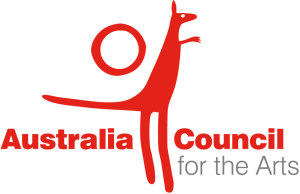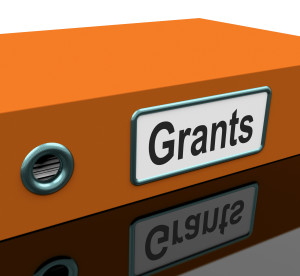Pre-emerging is defined (by me) as describing a new writer who does not meet the criteria of “emerging,” a word found in the “about” section of many literary market websites. This is the Australia Council for the Arts definition of an emerging writer that I found on the Meanjin blog:
“You are a contender as an early career artist if you have some achievements under your belt as a professional. This means you can highlight some key achievements that demonstrate a professional outcome for your art. For example, this could be having a book or play published.” [1]
Of course, this is one very narrow definition. Here is the description given in the criteria for the NYC Emerging Writers Fellowship Program:
“We define “emerging writer” as someone who has not yet had a novel or short story collection published by either a major or independent publisher and who is also not currently under contract to a publisher for a work of fiction. Eligible applicants may have had stories or novel excerpts published in magazines, literary journals or online, but this is not a requirement.” [2]
So there you have it. Two dissimilar yet related definitions. If you do not fit either criteria (as I didn’t when I started seriously pursuing writing) then you are a “pre-emerging writer”
[NOTE: Alongside “emerging writer” you also may be encouraged to read that some journals pride themselves on being the home of many writer’s first published work. Some well known ones include Zoetrope and Glimmer Train. I will devote a post in the future to these exciting markets. Stay tuned.]
So what is a “pre” emerging writer to do? I don’t know, but here is what I did/do:
- Sharing is Eye-opening
I find that sharing my work is crucial. I always try to make clear to my readers (all of whom were close friends and family members at first) that I was looking for specific feedback. Consider asking specific questions like:
After the first paragraph, did you want to read on?
How would you sum up the story in one sentence?
How did you feel when it was over?
Which character was the most alive?
Questions like these make the best use of my time and my reader’s time. I am fortunate to have really honest, bright and well-read friends and family members. Consider this: don’t share your work with someone whose opinions you don’t put stock in. Their feedback might be helpful, or they could muddy the waters and cause you to question your intent. On second thought, that might not be a bad thing. If you only want to hear good things about you work though, you may not be ready to share it.
Try not to take criticism personally, and seek viewpoints from people of different backgrounds. Editors are a diverse bunch when it comes to taste. My story “Hemisphere” was rejected by three or four journals before it found a home.
If you are looking for some quality feedback, consider researching Third-Point Press. It is a new publication that offers expedited reading for a charge of $5. Even more thrilling, you can get great feedback on your submission for an additional $3. They rejected the story I sent them, but the fiction editor’s feedback was specific and thorough. After a few of my own readers echoed similar feedback, I took the story back to the editing table and wound up with a much closer approximation of what I was hoping to achieve. No happy ending yet though, I haven’t heard back from any of the journals I sent the new draft to (as of 5/13/15)
- Organization is next to…
I find keeping fastidious records to be extremely beneficial. I keep a document called “pending submissions” where I list all my active submissions along with the date of the submission and the expected response time. Once I get the results, I move the entry from the “pending” section to the “results” section and include the date of the rejection/acceptance. You can enter this information into Duotrope (more on this later), but I find it to be a bit time consuming with all the fields that need populating.
I also keep a record of everything I read. This leads me to…
- …Read!
As a “pre” emerging writer, I have tried to familiarize myself with as many markets as I can. Many market websites say something to the effect of “the best way to get a feel for what we publish is to read an issue. You can purchase one here.”
I do purchase a lot of journals, but the cost really starts to add up. Luckily, many markets are free to read online, and many print journals provide free online content as well. However, I have found that reading a print journal cover-to-cover is still the best way to get a feel for the work the editors select.
At the back of most journals you can find (sometimes) interesting biographical sketches of the contributors. Oddly enough, I sometimes skip to this part before I read anything. I find it fascinating to see the different places that particular authors’ works have been published throughout their development. If you find a writer whose work you connect with in a meaningful way, see where else their works appear. If your output is in a similar vein, their list of publications could give you a place to start when seeking markets for your own work.
I am considering applying for MFA programs for next fall. In the meantime though, I want to continue improving my craft. I am of the belief that knowing great writing is crucial if one wants to be able to put contemporary work in any meaningful context. As a writer of primarily short stories and flash fiction, I have created my own reading course that includes Hawthorne, Twain, Faulkner, Hemingway, Nabokov, Vonnegut, Carver, Munro, Saunders and beyond. If any of those names are unfamiliar, and you want to understand how the short story has evolved over the years in North America, get yourself to the library and read up.
- It is about the journey, not the destination
Here is a simple fact: every writer was once a “pre”emerging writer. This phase looks different for every writer, and I’m sure it is usually longer than any of us wish it to be. I always try to keep in mind that publication is only one measure of growth for writers at this early stage of development. I was fortunate to have a great mentor during my undergraduate years who inspired me to start taking my writing more seriously. She helped me get my first taste of publication when the article we researched and co-authored was picked up by a major peer-reviewed journal in our field. That was in 2012. That means I’ve been a “pre” emerging writer for three years and counting.
When my first fiction piece was accepted in May of 2015, I was incredibly grateful and excited. I was, quite frankly, shocked. I believed that my work was good or I wouldn’t have sent it out. However, I had become so preoccupied with the competitive nature of the publishing world, that I figured it might take much longer than eleven months to get lucky.
[NOTE: I will never forget where I was when I got that acceptance email. I was in Old New Castle here in Delaware, about to dig in to a crawfish po ‘boy at Nora Lee’s. We also got hush puppies]
Publication for me meant validation. When the shock had worn off though, I was the same writer I was when I woke up that morning. That sense of accomplishment faded quickly as I realized how much work I still had ahead of me. It has been about a month since I saw my work in print, and that sensation of validation and accomplishment has already faded. Do not think that a publication or two will purge you of self-doubt. Pat yourself on the back and go write something.
I know I said that I would not be offering advice, but here’s one small piece: buy a monthly subscription to Duotrope. For $5/month you get an accessible, exhaustive, searchable list of markets for your work. At the very least, you can while away the hours reading snippets about thousands of journals from the eminent to the obscure. The site also lists stats on each journal that I, personally, take with a grain of salt. For example, it will tell you the percentage of submissions that the journal actually accepts, along with less interesting stats like which ones personalize their rejections. These journals are listed as “Most Personable.”
Since, however, these stats are based on other subscribers self-reported data, I have no idea how accurate they actually are. The FAQ section on Duotrope even graciously points out that “Statistics, whether it is our response statistics or a political poll, should always be looked at with skepticism.” They also have an algorithm in place that weeds out data outliers. I do not enter most of my pending submissions into the system; I imagine many people do not. I do refer to the website on a pretty frequent basis, and I honestly find it invaluable.
Summary.
What I do as a “pre” emerging writer:
- Seek feedback from various reliable sources often
- Keep good records of submissions and other information
- Know my predecessors and contemporaries and research and read a variety of literature markets regularly
- Recognize and celebrate growth. Don’t rely on publication as the sole measure of success or validation.
- Duotrope
I hope you found my experiences and tips helpful. Part Three: Adventures in Submitting is coming soon!
References:
[1] http://meanjin.com.au/blog/post/youre-not-an-emerging-writer-unless-youve-published-a-book/
[2] http://centerforfiction.org/forwriters/grants-and-awards/


